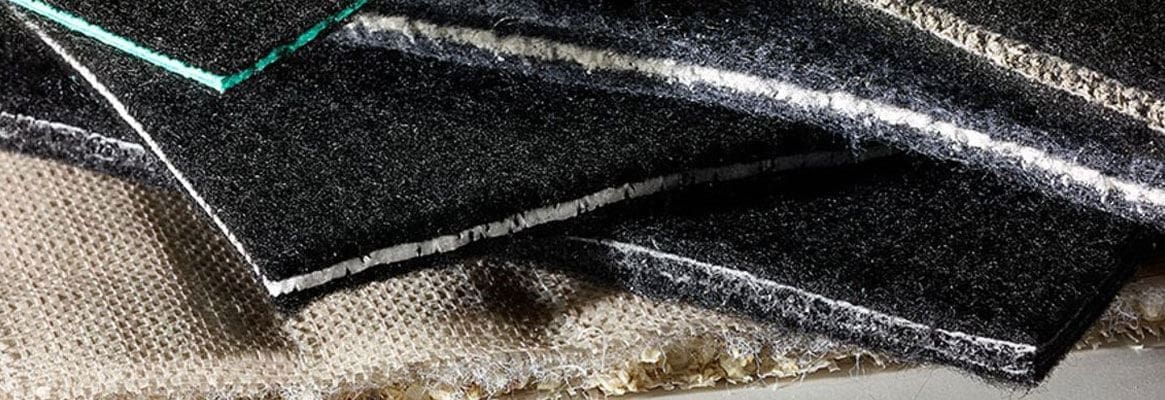Need for secure containment
Containment of water and wastewater in ponds may be needed for reasons as wideranging as seepage avoidance to prevention of groundwater contamination.
Whatever the reason for lining a pond, the use of geosynthetics in these types of applications is growing. Geomembranes create an essentially impermeable barrier that prevents any liquid that is in the pond from migrating to the subsurface. Geonets, geocomposites, geotextiles and geogrids may be used to vent gases, cushion against uneven subgrade or provide reinforcement as needed.
Potable-wastewater treatment
The water containment applications with the longest history are those of potable water and wastewater treatment facilities. These types of applications primarily are found in industrial and municipal treatment facilities. Examples of lined structures include treatment lagoons, sedimentation basins and digestion ponds. The simplest example incorporates a geomembrane as a low permeability barrier between the water or wastewater being contained and the subgrade. More complex systems may incorporate geosynthetics as a protective layer for concrete structures, or in grit chambers and vertical flow control baffles. Geosynthetics also have proved to be an inexpensive alternative to refurbishing older concrete, clay or steel-lined structures that have begun to crack and leak over time.
Golf and decorative ponds
Up until the mid-1980s, the most common liner for golf and other decorative type ponds was a compacted clay liner. Because these liners are subject to cracking and subsequent leakage over time, geosynthetics now are being used to line these types of ponds. Geosynthetics can be installed more quickly and more economically than most compacted clay liners. In addition, the permeability of a geomembrane can be up to six orders of magnitude less than that of a typical compacted clay liner, which results in much more economical and effective performance.
Deicing ponds
Ethylene and propylene glycols are used extensively in deicing operations. If allowed to migrate into bodies of water, these chemicals deplete the available oxygen. Because of this, ponds that store used deicing solution often are lined with geosynthetics. In most of these applications, the geosynthetics are used as a barrier material underneath concrete. Such applications for deicing operations include detention ponds, deicing pads, snow dumps and settling ponds.
Agricultural applications
As an increasing amount of livestock production is being concentrated into large agricultural farms, the need to contain animal waste products is growing. These livestock usually are raised in large barns with concrete floors. Jets of water spray the wastes from the gently sloped floors into waste lagoons. Once in the lagoon, degradation of the waste may be accelerated by anaerobic microbes. Geosynthetics are used to line holding lagoons, treatment ponds, floating covers and evaporation ponds.
Aquaculture ponds
Geosynthetics also are used to line holding ponds for shrimp and fish in large aquaculture farms. The lined ponds have many advantages over standard soil or clay-lined ponds including decreased permeability and ease of cleaning and harvesting. The low permeability membranes ensure that more water stays in the ponds. It also assures that disease, should it occur, is not allowed to migrate through the subsurface soils and contaminate other ponds.
Floating covers
Whether the application is for storage of potable water or wastewater applications, floating covers can provide additional protection. Floating covers for potable water applications can limit infusion of contaminants into potable water. For wastewater applications, it can limit rain water intrusion into the pond and prevent nuisance odors from being released. For anaerobic applications such as animal waste containment, it can contain emissions gases and prevent oxygen from entering the pond, thus increasing the efficiency of the anaerobic digestion system.
Summary
There is a wide range of applications in which geosynthetics are being used successfully to improve the process of storing and treating water and wastewater. The applications include decorative ponds, potable water storage and wastewater treatment lagoons. Geosynthetics have lower permeability and generally are less expensive and easier to install than alternative liners.
The Geosynthetic Materials Association (GMA) is directed by the needs of the North American geosynthetics industry. It serves as the central resource for information regarding geosynthetics and provides a forum for consistent and accurate information to increase the acceptance and to promote the correct use of geosynthetics.

